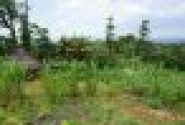
Manuel Guariguata explaining the importance of better considering biodiversity conservation in timber certification.
By Angela Dewan
As countries that cut down swathes of forest face mounting pressure from the world to stop, many of them, like Brazil, have made slow and steady progress in slowing deforestation rates.
Where governments are becoming more creative to ensure slowing deforestation does not hamper economic development, lax law enforcement means illegal loggers slip through the net.
One part of the solution is certifying timber that has been produced on legal land. Certified concessions have a significantly reduced harvesting intensity, said Robert Nasi, citing Paolo Cerutti’s research.
The scientists presenting on Wednesday morning’s session sought to find out whether and how forest certification contributed to the achievement of sustainable forest management; what the social costs and benefits were; and whether the economic gains from certification made the process worth undertaking.
“We also need to know how certification would change conditions in terns of biodiversity protection and ecological sustainability,” Nasi said.
Forest certification began 20 years ago, yet only 4-5 per cent of the world’s forests used for timber production are considered sustainably managed today.
Only 2 per cent of global tropical forests meet the standards of the Forest Stewardship Council (FSC), a multi-stakeholder non-government organisation that promotes the responsible use of forests.
Manuel Guariguata said that while certification most probably had a positive impact on biodiversity, it was difficult to really measure, in part because systematic collection of biodiversity data is rare.
“Forest managers rarely do it themselves, and auditors are poorly trained. From one assessment to the other the team of auditors change, so there is a lot of instability trying to standardise and make the information consistent,” Guariguata said, adding that certification lacked measurable objectives, including how local biodiversity values can be effectively incorporated within standards.
A number participants in this session commented on the need for improved study of impacts on biodiversity, citing issues of standardisation.
“The effects of logging for some species is positive, and for others it’s negative. And with others there’s no effect,” Guariguata said.

Scientists acknowledged the need for more in-depth analyses of forest biodiversity. Photo Ferran Turmo Gort/Flickr.com
“It would be fair to say certification has contributed a lot to biodiversity conservation, but there are many other steps to take.”
The FSC claims that low deforestation rates in the Maya Biosphere Reserve in Guatemala, nearby protected areas, is due to FSC certification. “From a proximal standpoint, maybe, but the underlying causes probably don’t have much to do with FSC certification per se. The ultimate cause probably lies elsewhere, like with multiple use of the land, social organisation and strong multi-stakeholder platforms,” Guariguata said.
Citing Auld et al., he said there was a low correlation between areas of FSC certified forests and net loss of forest cover at the country level in tropical countries.
“But this research was based on FAO statistics, and we should be very careful about that, because in this case, each country decides themselves what constitutes a forests.”
We want you to share Forests News content, which is licensed under Creative Commons Attribution-NonCommercial-ShareAlike 4.0 International (CC BY-NC-SA 4.0). This means you are free to redistribute our material for non-commercial purposes. All we ask is that you give Forests News appropriate credit and link to the original Forests News content, indicate if changes were made, and distribute your contributions under the same Creative Commons license. You must notify Forests News if you repost, reprint or reuse our materials by contacting forestsnews@cifor-icraf.org.












